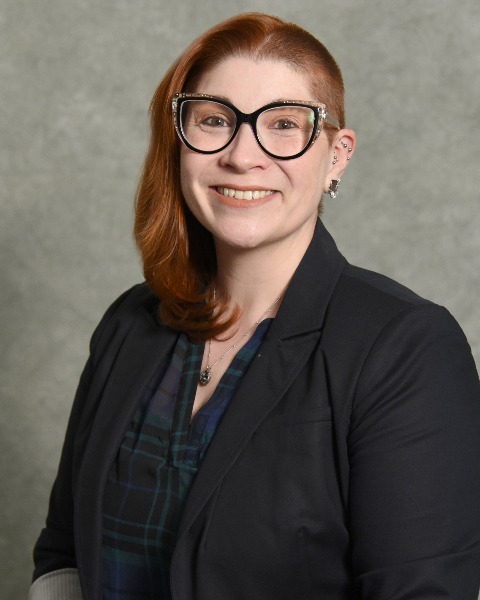Anatomy Education Posters
Poster: Anatomy Education Posters
137 - What the Illustration Shows About the Discipline: Teaching Histories of Anatomical Illustration to Students in Allied Health
Sunday, March 24, 2024
5:00pm - 7:00pm US EDT
Location: Sheraton Hall
Poster Board Number: 137
There are separate poster presentation times for odd and even posters.
Odd poster #s – first hour
Even poster #s – second hour
Co-authors:
There are separate poster presentation times for odd and even posters.
Odd poster #s – first hour
Even poster #s – second hour
Co-authors:
-

Rebecca E. Maatta, PhD
Associate Professor
Duquesne University
Pittsburgh, Pennsylvania, United States
Presenting Author(s)
Abstract Body : Research Question: What are the assumptions students hold about the illustrations in their textbooks? By drawing students’ attention to some different ways that human anatomy and dissections were depicted in word and image in the West since Vesalius’ 1543 De Humani Corporis Fabrica, how can we increase their awareness of what makes an illustration “good” for their purposes?
Methods: I prepare students in the allied health sciences for their full cadaveric dissections in two separate classes: “Healthcare and Literature” and Anatomy. Part of this preparation entailed introducing students to the ways in which the teaching and learning of anatomy via dissection has changed over time. While atlases have been a central feature of anatomy instruction for centuries,, book printing technologies, understandings of spirituality, social inequalities, debates over objectivity, and what makes an image “good” are factors that have all influenced how dissections have been represented. In showing students illustrations from atlases by Vesalius, Bidloo, W. Hunter, J. Bell, Gray, Chubb, Netter, and Wesker, students see the evolution of convention across time and come to recognize the helpful features of typical illustrations today. We look at “the” structure rather than an individual’s structure; illustrations no longer evoke emotions or connote violence or suffering; objects not related to the structure or system to be learned do not appear in the image; atlases are no longer massive collectors’ texts; they no longer meditate on spirituality and death; animated cadavers no longer dance through landscapes.
Results/Significance: Students in both classes, through discussion and written reflections, demonstrated their understanding of how, for them in lab, the most helpful illustrations were those that did not evoke emotion, did not appear to be an individual person, and allowed them to intensely keep focus on the structure, its relations, and its name. The neutrality of aesthetic elements such as the anatomical position and the “self-revealing” body became clear to them, and as a result, they were further able to write in reflections about what elements of their study tools fostered or disrupted their efforts at cultivating a healthy clinical distance.
Methods: I prepare students in the allied health sciences for their full cadaveric dissections in two separate classes: “Healthcare and Literature” and Anatomy. Part of this preparation entailed introducing students to the ways in which the teaching and learning of anatomy via dissection has changed over time. While atlases have been a central feature of anatomy instruction for centuries,, book printing technologies, understandings of spirituality, social inequalities, debates over objectivity, and what makes an image “good” are factors that have all influenced how dissections have been represented. In showing students illustrations from atlases by Vesalius, Bidloo, W. Hunter, J. Bell, Gray, Chubb, Netter, and Wesker, students see the evolution of convention across time and come to recognize the helpful features of typical illustrations today. We look at “the” structure rather than an individual’s structure; illustrations no longer evoke emotions or connote violence or suffering; objects not related to the structure or system to be learned do not appear in the image; atlases are no longer massive collectors’ texts; they no longer meditate on spirituality and death; animated cadavers no longer dance through landscapes.
Results/Significance: Students in both classes, through discussion and written reflections, demonstrated their understanding of how, for them in lab, the most helpful illustrations were those that did not evoke emotion, did not appear to be an individual person, and allowed them to intensely keep focus on the structure, its relations, and its name. The neutrality of aesthetic elements such as the anatomical position and the “self-revealing” body became clear to them, and as a result, they were further able to write in reflections about what elements of their study tools fostered or disrupted their efforts at cultivating a healthy clinical distance.

